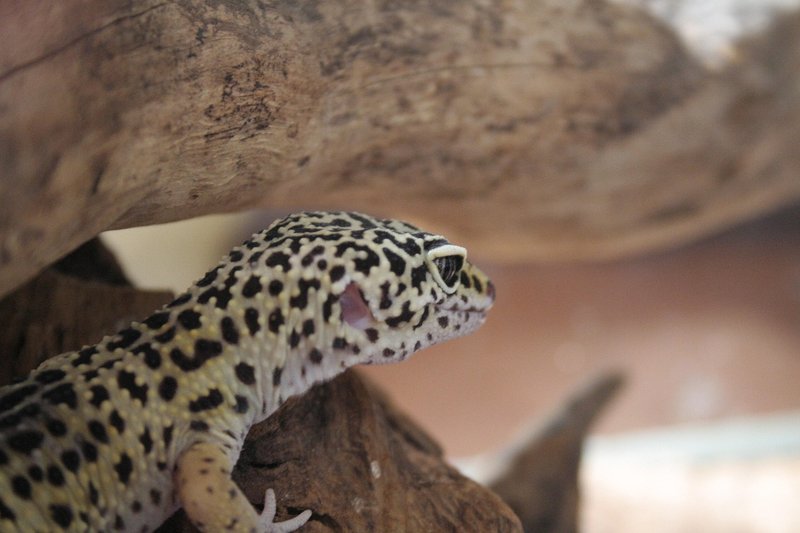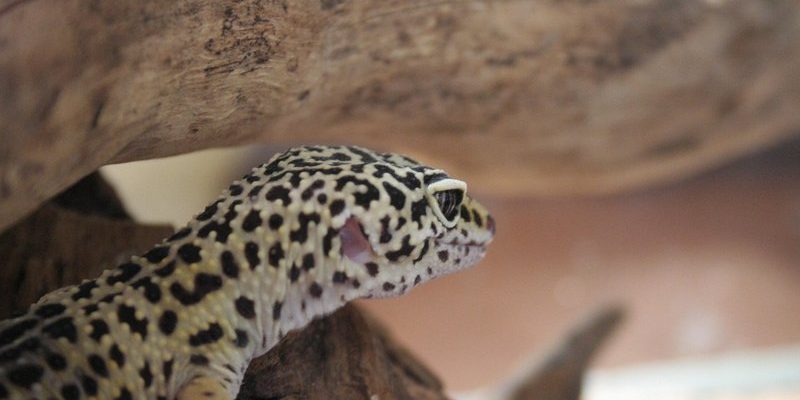
When you think of reptiles, you might picture snakes slithering or turtles slowly plodding along. But let me introduce you to the leopard gecko, a truly captivating little creature that might just steal your heart. With their vibrant colors, unique personalities, and easy-care requirements, these geckos have become one of the top choices for reptile enthusiasts and first-time pet owners alike. You might be surprised to learn that they can even recognize their owners and show affection!
Leopard geckos originate from the deserts of Asia, particularly in countries like Afghanistan, Pakistan, and India. Their distinctive spotted patterns not only give them their name but also help them blend into their natural habitat. Imagine a little lizard with a sun-kissed palette of yellow, orange, and white, adorned with black spots—pretty charming, right? They thrive in a warm environment, making them ideal for home environments with the right setup.
Physical Characteristics
One of the first things you’ll notice about leopard geckos is their captivating appearance. They typically grow to be about 7 to 10 inches in length, although some can reach up to 11 inches. What sets these geckos apart from others is their thick tail, which stores fat and helps them survive in their arid habitats. This tail can also drop off if the gecko feels threatened, a clever survival tactic. But don’t worry; if it happens, they can grow it back over time!
In terms of coloration, leopard geckos have a variety of morphs, which are just fancy terms for their color variations. From the classic yellow and black to more exotic colors like snow white, bold blue, and even some with vibrant pinks and reds, there’s a morph for every kind of reptile lover. Their skin feels smooth to the touch and is covered in tiny scales, which add to their unique texture. You might also notice their large, expressive eyes, which are better suited for nocturnal vision—perfect for a night-time adventure!
Habitat and Care Requirements
If you’re contemplating bringing a leopard gecko into your home, you’ll want to understand their habitat needs. These little reptiles are somewhat territorial, so it’s essential to provide them with a spacious vivarium—at least a 20-gallon tank is ideal for a single gecko. When setting up their home, think desert vibes: add plenty of hiding spots using rocks, caves, and thick plants to mimic their natural environment.
Temperature is crucial when caring for leopard geckos. They thrive in warm, dry conditions, so having a heat source is essential. Aim for a gradient temperature in the tank, with one side being around 95°F (35°C) for basking and the cooler side around 75°F (24°C). You should also consider adding a substrate like reptile carpet or paper towels—these are easy to clean and help maintain humidity levels. A shallow water dish is a must, too—keeping your gecko hydrated is key!
Diet and Feeding Habits
Leopard geckos are primarily insectivores, which means they munch on a diet of insects. The most common food options include crickets, mealworms, and dubia roaches. It’s important to offer these critters in the right size—think about the size of your gecko’s mouth. You wouldn’t want to chomp into something too big! Supplementing their diet with calcium and vitamin D3 is also crucial for their bone health, especially since they don’t get much UV light in captivity.
Feeding them can be a fun experience, but it’s important to maintain a regular schedule. Beginners often find it helpful to feed adult leopard geckos every other day and younger ones daily. Be attentive to their behavior—if they seem less active or show signs of weight loss, it might be time to adjust their feeding routine or consult a vet. Remember, a happy gecko means a happy owner!
Behavior and Personality
Leopard geckos are renowned for their fascinating behaviors. They have quirky personalities and can be quite social when handled properly. This means spending time with them, letting them explore your hands, and getting used to your presence will help build a bond. They often greet their owners with head bobbing or little tail wags—just like a happy dog! This affectionate behavior is one of the reasons many people find them such a joy to keep.
You might also notice that these geckos communicate through body language. For instance, when they feel threatened, they may puff up their bodies or hide in their burrows. Understanding these cues is crucial to ensuring they feel safe and secure in their environment. Overall, their curiosity and engaging antics can be quite entertaining and will keep you coming back for more.
Common Health Issues
Like any pet, leopard geckos can experience health issues. A common worry among owners is metabolic bone disease, which can occur if they don’t get enough calcium or UV light exposure. Symptoms include lethargy, difficulty moving, and deformities in their limbs. If you notice any of these signs, it’s wise to consult with a vet who specializes in reptiles.
Other potential health concerns include respiratory infections, which can arise from improper humidity levels or temperatures that are too cold. A well-maintained habitat with the right temperature and humidity is key to preventing these issues. Regularly checking your gecko for signs of parasites, such as weight loss or abnormal droppings, is also a good practice to ensure they remain healthy.
Breeding Leopard Geckos
If you’ve got a pair of leopard geckos and are feeling adventurous, you might consider breeding them. This requires a bit of knowledge and preparation. First, you’ll need to ensure that you have a healthy male and female. Make sure they are of breeding age, which is usually around 18 months. It’s essential to establish a suitable breeding environment, which typically involves maintaining a separate tank with appropriate nesting areas.
The breeding process can be fascinating to witness. After a successful pairing, the female will lay eggs, usually in clutches of two. Proper care of the eggs involves maintaining the right humidity and temperature for them to hatch successfully. Keep in mind that breeding can be an involved process, and you’ll need to have plans in place for the babies once they hatch. Be prepared for some adorable little geckos to enter your life!
Leopard Gecko Morphs
As mentioned earlier, leopard geckos come in various morphs, each with its own unique colors and patterns. Some of the most popular morphs include the classic *Bengal*, the eye-catching *Tangerine*, and *Albino* morphs that sport stunning pale colors. Each morph can vary in price, and their uniqueness often makes them desirable among collectors. If you’re interested in a certain morph, it’s always fun to do some research and find out which types catch your eye.
Many enthusiasts enjoy sharing their leopard gecko morphs in online communities. These platforms are fantastic for learning more about care, breeding, and even showcasing your pets. You might just find inspiration for your next gecko or a new friend who shares your passion for these captivating reptiles!
Leopard geckos truly are remarkable pets. Their vibrant colors, unique personalities, and relatively simple care requirements make them a great option for both beginner and experienced reptile lovers. They provide a fantastic opportunity to learn about reptiles while offering companionship that’s both entertaining and heartwarming. So whether you’re considering adopting a leopard gecko or just satisfied with observing these fascinating creatures, it’s clear they have a special place in the world of pets.
FAQ
What is the average lifespan of a leopard gecko?
Leopard geckos can live quite long compared to many other reptiles, often reaching 15 to 20 years when well cared for. Proper diet, habitat, and regular vet check-ups play a crucial role in ensuring they have a long and healthy life. Many owners find themselves forming strong bonds with their geckos over the years, making them cherished pets for life.
Can leopard geckos be social pets?
Absolutely! Leopard geckos can be social animals when properly handled and cared for. They may not be as interactive as some mammals, but they can recognize their owners and enjoy gentle handling. Remember, it’s essential to handle them regularly from a young age to build trust and familiarity. Gradually introducing them to new experiences can make your gecko more comfortable and confident.
What should I do if my leopard gecko won’t eat?
If your leopard gecko suddenly refuses to eat, it can be concerning. First, check the temperature and humidity levels in their habitat; sometimes, improper conditions can impact their appetite. Additionally, ensure you’re offering a varied diet and trying different insects. If they still won’t eat after a few days, it’s best to consult a reptile veterinarian to rule out any underlying health issues.
How do I know if my leopard gecko is in good health?
Monitoring your leopard gecko’s behavior and appearance is key to assessing their health. A healthy gecko will be active, alert, and have a good appetite. Their eyes should be bright and clear, while their skin appears smooth and hydrated. Regular checks on their droppings can also provide useful insights; normal droppings should be dark and firm. If you notice any changes in behavior or appearance, it’s a good idea to consult with a vet.
Do leopard geckos need UV light?
Unlike many reptiles, leopard geckos do not require UV lighting since they are primarily nocturnal and originate from environments with minimal sunlight. However, providing them with a source of UVB can be beneficial, especially if you’re breeding them or want to enhance their overall health. If you do choose to include UV lighting, ensure it’s not the sole source of heat in their habitat.
Can I handle my leopard gecko every day?
Handling your leopard gecko daily can help strengthen the bond between you two, but it’s important to do so gently and without overwhelming them. Start with short handling sessions, gradually increasing the time as your gecko becomes more comfortable. Always support their body when you hold them and avoid sudden movements. Gentle and respectful interactions will make your gecko feel safe and more inclined to enjoy your company.
What size tank do I need for a leopard gecko?
A minimum of 20 gallons is recommended for a single adult leopard gecko. However, if you plan to keep multiple geckos, consider larger tanks. Bigger spaces allow for more enrichment, hiding places, and territory for each gecko. A well-structured habitat is crucial in promoting their health and preventing stress.
What are some common signs of stress in leopard geckos?
Leopard geckos can show signs of stress through behaviors such as hiding frequently, lack of appetite, excessive hiding, or even aggression towards tank mates. Providing adequate space, proper heating, and sufficient hiding places can help reduce their stress levels. If you notice significant changes in behavior, it’s best to review their environment to ensure they feel safe.
How often should I clean my leopard gecko’s habitat?
Cleaning your leopard gecko’s habitat regularly is key to their health. It’s a good practice to spot clean daily, removing waste and uneaten food. Full cleanings should be done every couple of weeks, where you change the substrate, clean the tank’s surfaces, and refresh the water dish. Maintaining a clean environment will help prevent health issues and encourage a happy gecko.
Are leopard geckos good for beginners?
Yes, leopard geckos are often regarded as one of the best reptiles for beginners. Their relatively simple care requirements, friendly nature, and engaging personalities make them an ideal choice for new reptile owners. As long as you’re prepared to meet their needs and provide a comfortable habitat, these lovely lizards can be a wonderful addition to your home.

